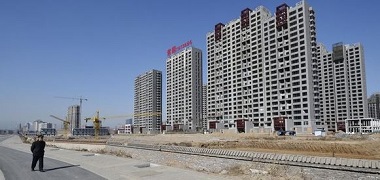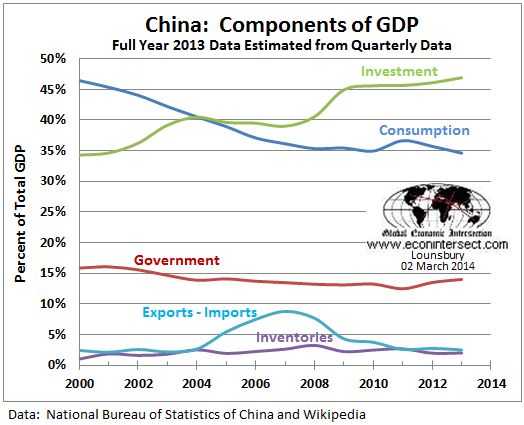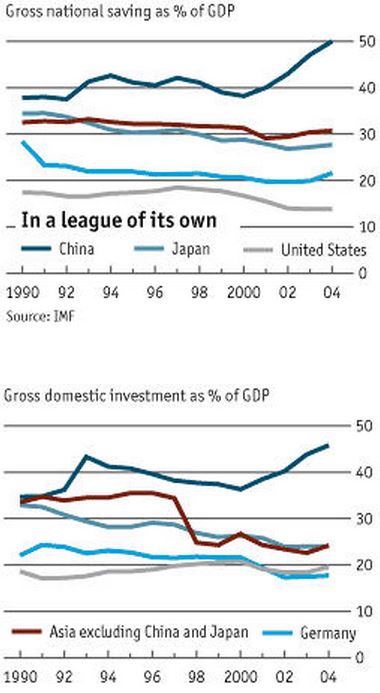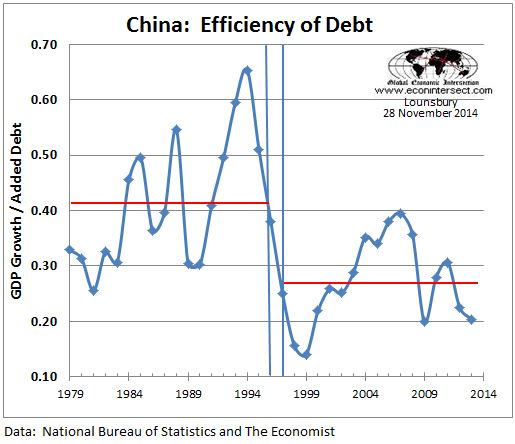Jamil Anderlini, writing in the Financial Times, brought our attention to some Chinese government research about the debt in China and how it has been used for investment in that country. See China has ‘wasted’ $6.8tn in investment, warn Beijing researchers. Looking deeper into the subject, including looking at the paper Anderlini reported on (Inefficient and ineffective investment causing a huge waste by Xu Ce and Wang Yuan, Shanghai Securities News – in Chinese), we think the question of waste is more nuanced than the $6.8 trillion figure quoted would indicate.
Click for full and larger image by Reuters at the Financial Times.
The problem that China is dealing with starts with the unique position they occupy in the world with the level of investment much higher and consumption much lower than everyone else. The change (reversal) of this relationship is at the core of what is meant when the term “rebalancing” is applied to China.

The comparisons to other large economies shows China has gotten into a league of its own.

Note: The very high savings and investment level in China is achieved at the expense of wages (and therefore lowered consumption, which is how wages are spent). This situation is a form of what is referred to as “financial repression”. More common uses of the term applies to (1) “austerity” wherein government channels what might have gone to personal incomes into sovereign debt reduction through tax hikes or government expenditure reductions or (2) conditions of abnormally low or negative interest rates. These more common uses are processes whereas our use of the term for the situation in China refers to the end result: High government expenditures and low consumer expenditures.
The data was segregated into two time periods by Xu and Wang, shown in the next graph:

They identify a period of higher growth per unit of debt (1979-1996) and a lower growth period (1997-2013).









Leave A Comment